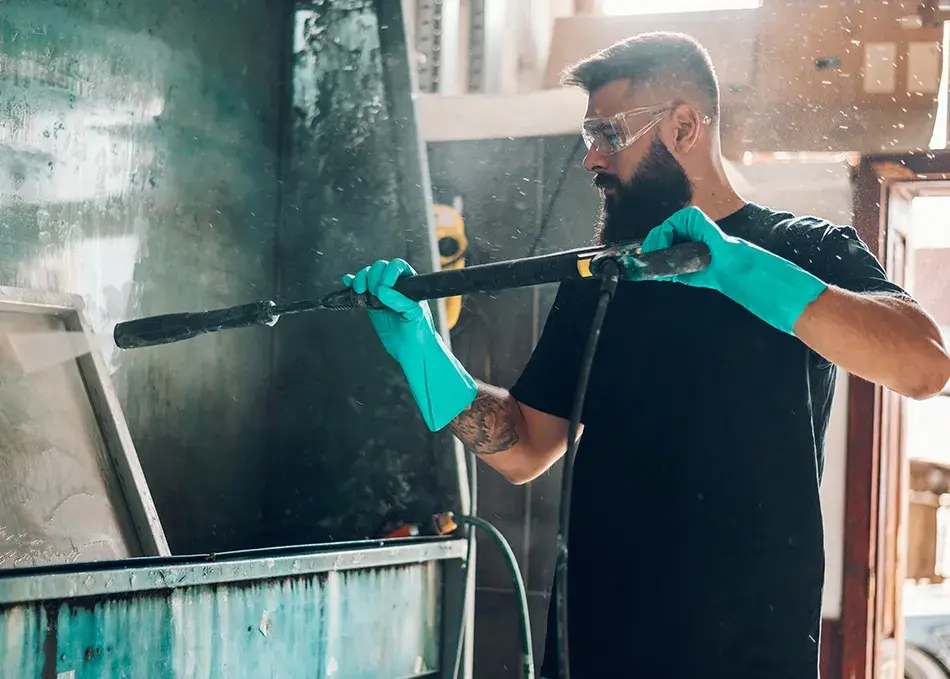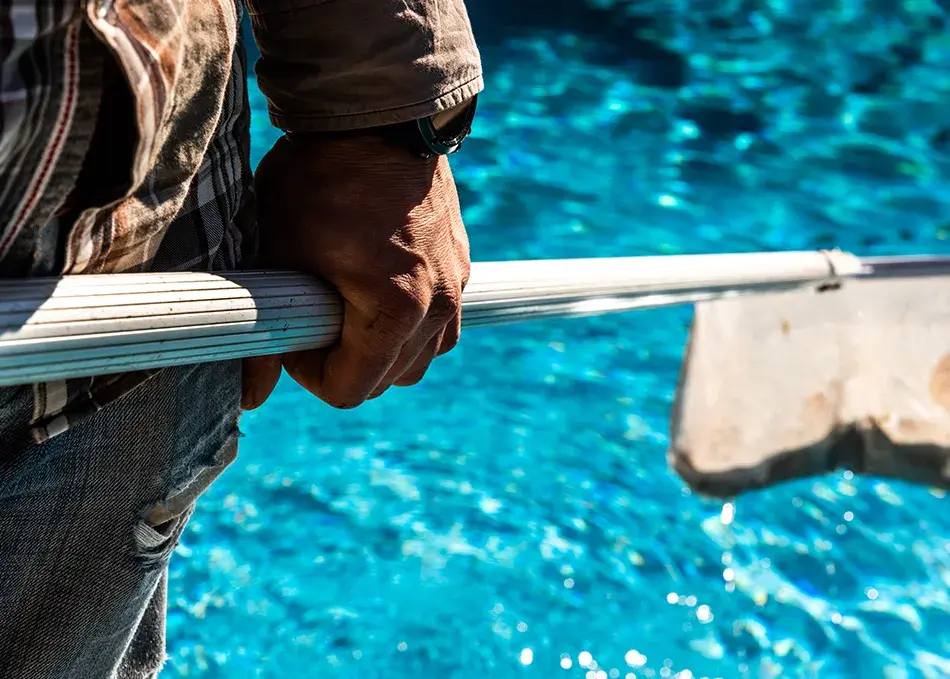Liquid Chlorine: The Perfect Pool Pro Tool for a Crisis
As recently published by HASA’s Terry Arko in Pool Pro Magazine Liquid chlorine has been around for a long time and is widely used in commercial and...
⬢ Pool Professionals
Professional-grade products. Expert support. Built for your business.
⬢ Pool Owners
Eco-friendly, easy-to-use solutions to keep your pool clean and clear.
⬢ Industrial
Efficient treatment & supply. Performance-focused operations support.
⬢ Municipal
Reliable solutions & delivery. Sustainable treatment for public systems.
⬢ Dealers
Help your pool & spa customers with trusted, professional-grade products.

⬢ Pool Products
HASA has the chlorine, algaecides, and sanitizers you need to keep your pool or spa clean and clear.

⬢ Hot Tub Products
Shop our full line of Hi-Temp spa care products, including Eco-Safe Clarifiers and pH Increasers.

⬢ Ancillary Products
Our eco-friendly water treatments are science-backed and purposefully focused.

⬢ Mini-Bulk Program
We deliver a premium 12.5% sodium hypochlorite solution for sanitizing commercial pools and large-scale water systems.
⬢ Blog
Learn from water chemistry experts.
⬢ Videos
Browse instructional how-to videos.
⬢ Safety Data Sheets
Download SDS sheets for HASA products.
⬢ Orenda Academy
For water chemistry & professional pool management knowledge.
⬢ Events
Find HASA at an event near you.
⬢ Rewards
Explore our HASA loyalty rewards program.
⬢ About HASA
Learn about HASA's commitment via the returnable packaging model.
⬢ Careers
Explore open positions with HASA.

I am a dog lover. I have owned many dogs throughout my life. One thing I learned is that there are good dogs and bad dogs. The main difference between what makes a dog good or bad is how they are managed from the start. Some dog breeds are easier to train then others. I once owned a beagle and trust me Caesar Milan could not have trained that dog. I also had a yellow lab who was very easy to manage and train. The reason for this dog analogy is because in many cases pools are like dogs and how good or bad the pool is can depend on how the pool was started and managed from the beginning. What is the pool surface and the best way to treat that type of surface? A vinyl or fiberglass pool should be managed differently than a plaster pool. The care and feeding of the pool is important as well so having a good understanding of the source water is important. Is the fill water soft or hard? Is it well water or municipally treated water? Is the source water treated with chloramines? What is the starting total dissolved solids TDS of the water from the source? One of the most vital factors to make sure that your puppy pool will grow up to be a good pool is to know the Langelier Saturation Index LSI of the start-up water and adjust your pool water accordingly from the get-go. A good pool is one that has been managed from the start with a proper LSI that tilts slightly towards the plus or basic side. Here are some ideal levels to give you an idea of what a good pool should look like:
If you have a pool that is in these ideal levels, then you have a good pool. It is also important to consider some of the physical parameters such as good circulation, flow, and filtration. Good surface water movement is important because 75% of contaminants are at the surface. Healthy water is water that moves.
If every pool existed in a bubble then they would be good all the time. However, the majority of pools are open systems that are subject to the environment and just about every possible scenario of contamination. Wind, rain, fires, and sunshine are just a few of the onslaughts that can quickly turn a good pool to bad. Wind can blow organic contaminants such as leaves, branches and grasses into the pool that will consume the chlorine quickly. Rain washes in pollutants from the environment like sulfuric and nitric acid that can lower the pH. High nitrate levels from storms can cause a greater chlorine demand because they act as a nutrient for algae growth. If fertilizer gets washed into the pool it will contribute both nitrate and phosphate which are prime nutrients for algae growth. Wildfires can contribute heavy amounts of smoke and ash into pool water. This will consume the chlorine residual and cause the pH to lower as smoke and ash are acidic. Maintaining a good pool is literally a balancing game which not only incorporates the water itself but the surrounding environment, the weather, and the users. I am convinced that most pools would stay nearly perfect if it were not for one thing. People get in them. Clean and pure as we might think we are every human contributes millions of bacterial waste when they take a plunge. The average swimmer contributes 2 pints of perspiration per hour. Human perspiration contains urea along with some other minerals. Urea combines with chlorine in pool water and forms tri-chloramine or trihalomethane. The presence of high amounts of urea from perspiration or directly from urine can lead to an immediate lowering of free chlorine and an increase of irritating chloramines. Add to that body oils, hair and skin follicles, deodorants, lotions and soap residue and you have a real concoction of contaminants. And since I started this off with a canine analogy one dog in the pool is equal to the contamination of 50 people. If you are curious as to what the contamination of one person brings consider the following information:
Multiply all of the above by 50 and you may want to keep Fido out of the pool. It is plain to see as well that a pool with a large amount of swimmers can turn from good to bad really fast.
This is the main reason water needs to be managed with chlorine. Chlorinating compounds have the ability to quickly inactivate most bacteria and viruses. Some examples with chlorine of 1 ppm and pH of 7.5 with no cyanuric acid (CYA):
Based on these examples it is clear to see that differing germs require different contact times to be inactivated. Also, these times do not account for how any level of CYA will reduce the effectiveness of the killing agent of chlorine. In short with any level of cyanuric acid it will take more chlorine and more contact time to effectively kill bacteria and algae. According to a report by the Centers for Disease Control (CDC) it takes over twice as long for chlorine to inactivate the parasite cryptosporidium(crypto) with a minimum of 15 ppm of CYA. At 20 ppm of chlorine with zero CYA the crypto is inactivated in 12.5 hours. When CYA is present at 15 ppm it takes 28 hours to inactivate the crypto germ.
One of the great benefits of chlorine is that when properly dosed it has the ability to leave a measurable residual in the water. This is to deal with any pathogenic (disease causing) micro-organism that may enter the pool. Keeping a steady residual at all times is vital to keep a pool from going bad. Bacteria can double in population within 15 to 60 minutes. In untreated water there can be millions of bacteria present within 8 hours. Algae double in population in 3 to 8 hours. It can take less than 3 days for millions of algae to be present. The increase of bacteria and algae will also lead to a higher chlorine demand. Meaning it will take a lot of chlorine to deal with a pool that has turned bad. This explains why it can take several gallons of liquid chlorine before a measurable residual can be obtained again after treating a swamp green pool.
Familiarity breeds contempt and treating a pool the same day in and out can breed bacteria and algae. Some techs service their pools keeping them at the exact chlorine levels in every season. However, it is proven that pools will lose 1 ppm of chlorine on a sunny day. Throw into that leaves, grass, swimmers, animals etc.. And you can lose 2 to 3 ppm of chlorine a day. The EPA requirement for chlorine in public pools is 2-4 ppm. So if a pool tech adds enough chlorine to reach a level of 4 ppm it may not be enough based on what could occur during the week. This is why in the pool industry we must be proactive in our chemical treatments instead of reactive. This means testing and keeping CYA levels no higher than 50 ppm. Planning ahead for swim parties and severe weather. Super-chlorinating at least twice a month during the swim season. Keeping the water balance at the ideal recommended levels. Most importantly water must be refreshed from time to time. High total dissolved solids TDS can reduce the effectiveness of chlorine by up to 50%. The proactive treatment of shocking and specialty chemicals can go a long way towards preventing the pool from getting rebellious. Two vital specialty products are phosphate removal and clarifier. Keeping phosphates lower helps to reduce the ability of algae to bloom at normal chlorine levels. Clarifiers help to remove micron sized particulate that can consume chlorine in oxidation. If the majority of the chlorine you add gets consumed in oxidation then there will not be enough left to sanitize. Then bacteria and algae can reproduce and take over.
What can be done when the pool turns like a wild animal? Fear not, water takes a little training, and it can be turned back from bad to good. The first step in this is to determine if the water needs to be refreshed. If the water is old and tired with a very high TDS it could be best to drain and dilute some or all of the pool. After all everyone knows you can’t teach an old dog new tricks. And it’s much more difficult to manage old over-saturated pool water. Sometimes it may just need a partial drain to start the turn around process. Next bring the balance to the ideal levels as shown above. Hyper chlorinate the pool by adding 4 gallons of liquid sodium hypochlorite per 10,000 gallons. This treatment will effectively inactivate any bacteria and algae in the pool without adding any CYA. Let the pool come down to between 2-4 ppm. Add a phosphate remover and a good clarifier. Make sure that the pump system is set to run at least a medium 3,000 rpm for 6 hours a day, especially during the summer months. The pool should be super-chlorinated once a month in the off season and at least twice a month in the summer. Using liquid super chlorination takes 2 gallons per 10,000 gallons. These are just a few tips which could help to keep the pool from being a bad one to being a ribbon winner. A very good dog…Uh pool I mean.
Terry Arko has over 40 years of experience in the pool, spa and hot tub industry, working in service, repair, retail sales, chemical manufacturing and product development. He is a CPO instructor through the National Swimming Pool Foundation. He also serves as instructor for the Pool Chemistry Training Institute to certify residential pool techs. Terry is an active member on the Association of Pool and Spa Professionals Recreational Water Quality Committee. He currently works for HASA.

As recently published by HASA’s Terry Arko in Pool Pro Magazine Liquid chlorine has been around for a long time and is widely used in commercial and...

The last thing any pool owner wants is to have an outbreak of algae during the summer. Well maintained pools should be free from algae, however there...

As recently published by HASA’s Terry Arko in Aqua Magazine In the pool industry, words get synonymously thrown about and tend to lose their actual...